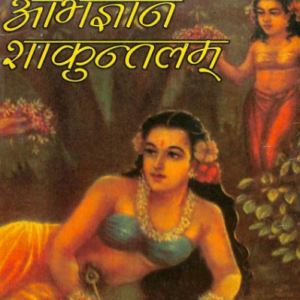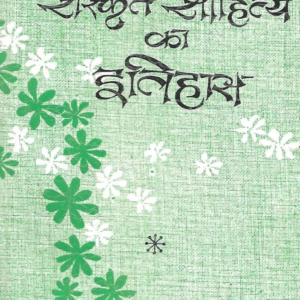Literature
Literature is a broad and encompassing term that refers to written works, particularly those considered to have artistic or intellectual value. It spans various genres, styles, and periods, reflecting the diverse ways humans have expressed their thoughts, emotions, and experiences through language. Here’s an introduction to literature, exploring its significance, forms, and historical development.
Definition and Scope
Literature encompasses any written or spoken material, but it is most commonly associated with works of creative imagination, including poetry, drama, fiction, and nonfiction. It can also include other forms like essays, memoirs, and letters, provided they possess artistic merit or explore human experience in depth.
Significance of Literature
- Cultural Reflection: Literature often mirrors the society in which it was created, offering insights into historical events, social norms, cultural practices, and the collective psyche of a people.
- Emotional Resonance: Through its exploration of human emotions and relationships, literature allows readers to experience a wide range of feelings and empathize with others.
- Intellectual Engagement: Literature challenges readers to think critically, question assumptions, and explore complex ideas.
- Aesthetic Pleasure: Literature provides aesthetic enjoyment through its use of language, style, and form, appealing to readers’ sense of beauty and creativity.
Forms of Literature
- Poetry:
- Lyric Poetry: Expresses personal emotions or thoughts, often in a musical and concise manner. Examples include sonnets and odes.
- Narrative Poetry: Tells a story through verse, as seen in epics like Homer’s “The Iliad” and Dante’s “Divine Comedy.”
- Dramatic Poetry: Includes plays written in verse, such as the works of Shakespeare.
- Drama:
- Tragedy: Depicts serious and often somber themes, leading to a catastrophic ending. Examples include Sophocles’ “Oedipus Rex” and Shakespeare’s “Hamlet.”
- Comedy: Focuses on humor and often portrays the lighter side of life, as seen in Aristophanes’ “Lysistrata” and Molière’s “Tartuffe.”
- Modern Drama: Explores a wide range of themes and styles, including realism and absurdism, as exemplified by Ibsen’s “A Doll’s House” and Beckett’s “Waiting for Godot.”
- Fiction:
- Novel: A long narrative work, often complex and multi-layered, exploring characters and plots in depth. Notable examples include Tolstoy’s “War and Peace” and Austen’s “Pride and Prejudice.”
- Short Story: A brief narrative that typically focuses on a single incident or character, as seen in the works of Edgar Allan Poe and Alice Munro.
- Novella: A shorter novel or long short story, such as Kafka’s “The Metamorphosis” and Conrad’s “Heart of Darkness.”
- Nonfiction:
- Essay: A short piece of writing on a particular subject, showcasing the author’s viewpoint. Examples include Montaigne’s “Essays” and Orwell’s “Shooting an Elephant.”
- Biography/Autobiography: The story of a person’s life, written by someone else or the individual themselves, such as Boswell’s “Life of Samuel Johnson” and Frank’s “The Diary of a Young Girl.”
- Memoir: A personal account of specific experiences and events in the author’s life, like Angelou’s “I Know Why the Caged Bird Sings.”
Historical Development
- Ancient Literature:
- Early literature includes oral traditions and ancient texts like the “Epic of Gilgamesh,” the “Vedas,” and Homer’s epics. These works often dealt with myths, religious beliefs, and heroic tales.
- Classical Literature:
- The classical period produced foundational texts in Western and Eastern traditions, including Greek tragedies, Roman epics like Virgil’s “Aeneid,” and classical Chinese poetry.
- Medieval Literature:
- Medieval literature includes works like “Beowulf,” Dante’s “Divine Comedy,” and Chaucer’s “Canterbury Tales,” reflecting the values and concerns of their respective societies.
- Renaissance Literature:
- The Renaissance saw a flourishing of literature, with Shakespeare’s plays, the poetry of Spenser and Milton, and the essays of Montaigne marking the period.
- Modern and Contemporary Literature:
- Modern literature encompasses a broad range of styles and themes, from the realism of Dickens and the existentialism of Sartre to the postmodern works of Pynchon and Rushdie. Contemporary literature continues to evolve, addressing global issues and embracing diverse voices.
Conclusion
Literature is a vital and dynamic form of human expression that spans cultures, periods, and genres. It offers a unique window into the human condition, providing both intellectual stimulation and emotional depth. By engaging with literature, readers gain a deeper understanding of themselves and the world around them, enriching their lives through the power of words.
Showing all 8 results
Chandamama : चंदामामा
LiteratureGita Govindam : गीतगोविन्दम्
LiteraturePanchatantra : पञ्चतन्त्र
LiteratureVimanika Shastra : विमानिका शास्त्र
Literature








